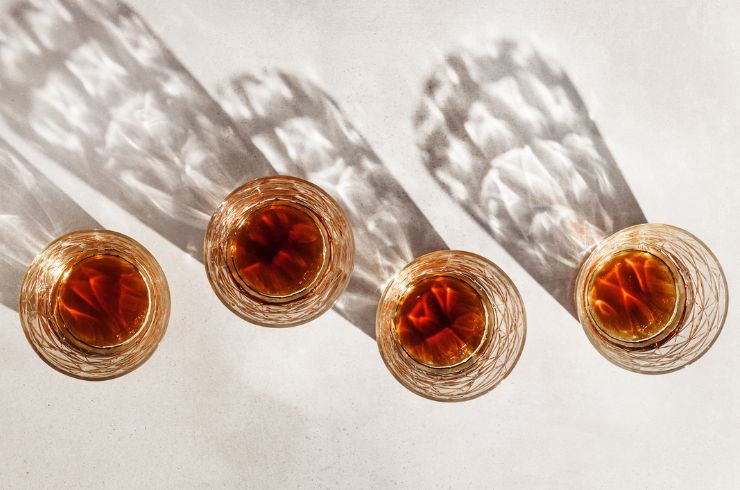As a concept, cellaring sounds relatively simple. Choose a wine, put it away for several years, be rewarded for your efforts with a vastly improved product when the time comes to drink it. But as anyone who’s ever attempted to properly cellar a collection of wine will know, it’s not quite so foolproof. Even if you have a purpose-built space for long-term storage, free from temperature variations, light and everything else that can spoil a wine, you still have to choose the right wines to put down. And then you must know when the right time is to drink them. Cellaring is an investment, both in time and money, but while mistakes can be frustrating and costly, the rewards make it all worth it.
Whether you’re a seasoned pro or starting out, we’ve answered your most-asked cellaring questions to help set you up for success.
Will every wine benefit from cellaring?
Short answer, no. Most wine is not designed to age; rather most wines are released when drinking windows are thought to be optimal, and they will start to decline after two to five years. Wines that improve over 10 or more years are surprisingly rare. Cellaring will also not improve a bad wine. If it’s not good when it’s young, age won’t miraculously transform it.
How can I tell if a wine will age well and I should put it down?
There are a couple of things to consider here. The first and most important is balance. All a wine’s elements must be in perfect harmony if it is to age well. If any one character is too obvious – like oak or tannin – time will more than likely make it more, not less, pronounced. Other considerations include variety. Certain varieties like cabernet sauvignon and shiraz are often built to withstand ageing, whereas varieties like pinot gris or sauvignon blanc are less likely to be. Wines for ageing have a foundation built around alcohol (alcohol is a preservative), and strong structural elements such as acidity (white wines) and tannins (red wines).
How do I know when to drink a wine?
We can make assumptions based on variety (see below chart) but a lot of it is trial and error. It’s also subjective. Well-aged wines develop certain, stronger characters that some love and others loathe. The safest option is to cellar multiple bottles of the same wine – that way you can check them periodically and drink them when they’re right for you. It can be helpful to use a system to keep track of what’s in your cellar, with the wines, their region, vintage and price, and space for notes as you taste your way through them. A spreadsheet will suffice, or you can use the Halliday Virtual Cellar.
.ashx?” /><span style=)
How much attention should I pay to drink-by dates?
Drink-by dates are often just educated guesstimates. As covered in the previous answer, the right time to drink a wine is subjective. Do you prefer the fresh, primary fruit flavours and aromas of young wines, or do you prefer the complexity and secondary characteristics of older wines? This will determine your own personal drink-by date.
Should I be cellaring white wines as well as reds?
You can. Very generally speaking, whites tend to be better when younger and fresher while the tannins in red wines allow them to be aged for longer, but there are lots of white wines that will benefit from some time in the cellar. White wines such as semillon or riesling are completely transformed by ageing, going from clear quartz with a hint of green in colour, to a vibrant green-yellow with increased complexity. A mature semillon or riesling is a special thing.
How should I choose birth-year wines to put down for my kids?
Stick with classic varieties and styles (riesling, semillon, Champagne, cabernet sauvignon, shiraz or fortifieds) and producers, pick a region with a track record for long ageing (such as Bordeaux, Burgundy, Margaret River or Coonawarra), and opt for screwcap over cork as they age more consistently. Splurge on First Growths or Grand Crus. Store it carefully – proper cellaring conditions are essential for long ageing.
How can I store my wine if I can’t afford a cellar?
There are several options – the best one for you depends on how many bottles you want to be able to put away. If it’s 100 or less, a wine cabinet can suffice. Otherwise, you can look into off-site storage – some bottle shops offer this sort of service, or there are dedicated wine storage businesses. Melbourne’s Pentridge Prison leases old prison cells for wine cellaring purposes. If none of these work for you, find the darkest, coolest space in your house, that's least susceptible to vibration or movement, set up a couple of wine racks and hope for the best.
Does wine need to be stored on its side or can I stand bottles up?
Wine under screwcap can be stored however you like, but wine under cork should be stored on its side. This helps to keep the wine in contact with the cork, which stops it drying out – a dry cork can lead to oxidation and other problems which destroy the wine. As for Champagne; there have been some studies done which indicate Champagne ages better standing up than lying down. However as most Champagne houses cellar their wines lying on their side, our instincts would be to do the same.
Can you cellar natural wine?
Provided you have the right cellaring conditions, then yes. The rules to cellaring natural wines are the same as conventionally made wines – if the wine is balanced, well-structured and delicious, you can cellar it. Orange wines in particular age quite well without any added sulphur thanks to their tannins.
What sort of wines should I be stocking up on now?
First and foremost, you should be stocking your cellar with wines you love. There’s no point loading it up with semillon if what you really love is Barolo. However, keep in mind that your tastes will likely change over the coming years, so having a range of styles, varieties and producers from a variety of regions and countries is also important. Buy current vintages as they’re generally more affordable than buying at auction later. Think about the end game, too: you don’t want every bottle maturing at the same time.
This article first appeared in issue #64 of Halliday magazine. Become a member and get digital access to the magazine.


